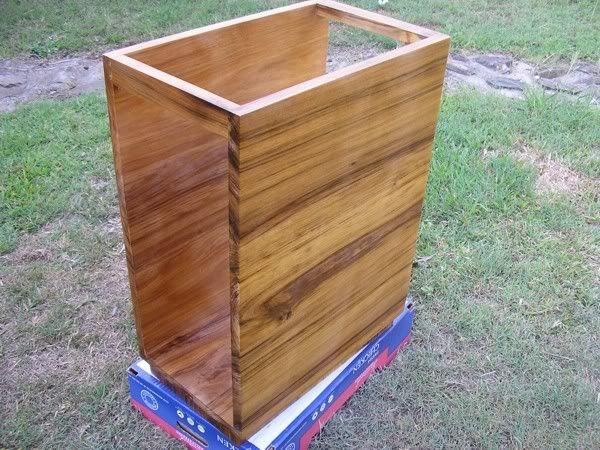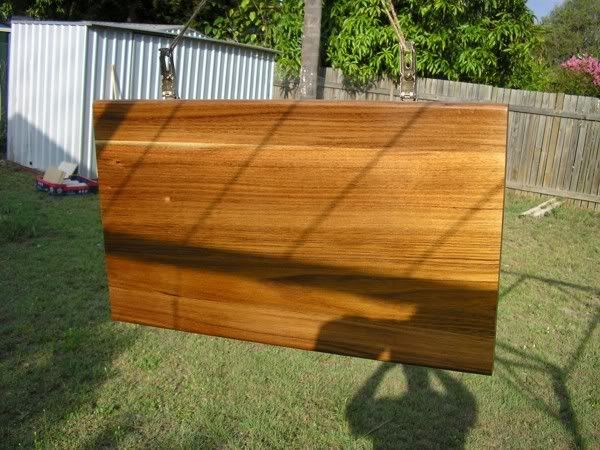Results 1 to 2 of 2
Thread: Questions about Mirocat
-
14th January 2007, 10:22 PM #1
 Questions about Mirocat
Questions about Mirocat
Hey Guys,
I've asked a bunch of questions in th Musical Instrument forum about this product (see my "Nitro-Cellulose thread) and have gotten a few good answers (thanks Mick). I've got several new questions about this and figured the finishing forum will most likely get me more answers.
So I build bass guitars and have always use Nitro-Cellulose. I can't find Nitro locally and have been told that Mirocat is a new version of nitro, better safer ect... so I figured I'll try it and see if it's really as good for my application.
So I got a 4 ltr can of Mirocat pc 3220 60% gloss and decided to spray a Tassie Blackwood computer desk I'm building to try it out before I start using this on my basses.
I sprayed it through a gravity feed gun/compressor setup at 50 psi. I had a pretty hard time regulating the flow out of this but then again it's the first time I sprayed lacquer out of this new gun. So anyway, what I did notice is the film is pretty thin to me. Another annoyance I saw later is that the datasheet says I should wait one hour to let it dry and then sand it with 400 before I can do a second coat.
I'm used to do 4 coats a day with nitro with no sandng between layers. Each coat melts into the other. With a total of about 12 to 15 coats of lacquer on a bass over a period of 3-4 days.Do I really have to sand every coat of mirocat beore I do another one? That really won't work well on a bass...
So... I decided to spray a second coat after about 30-40 minutes (no sanding) I didn't see much of a difference and the film still looks quite thin.
FINALLY! my questions
Cabinet makers out there that use Mirocat, what's your finishing schedule?
Anyone that might have used this product, how thick of a layer can you get?
Anyone has got any other tips or tricks about using this thing?
While we're at it here's some eye-candy. The desk I was spraying today.


-
15th January 2007, 05:54 PM #2
 Careful with Blackwood & pre-cat finishes
Careful with Blackwood & pre-cat finishes
Phil
Blackwood and other Acacia species e.g. Silver Wattle have high concentrations of natural chemicals (poly phenolics from memory) and can react with the catalyst and other components in these lacquers, the result can be bright reddy / orange blooms on the finished item. Mirotone make an 'Isolator Coat' that is designed to keep the woods chemicals in the wood and the lacquers chemicals in the lacquer.
I've used a fair bit of Mirocat and find that a coat of the sealer, followed by 1 or 2 coats of Topcoat works fine, sand in between coats with 400 grit or 0000 steel wool, the latter being my preferred.
I hope that this helps?
Regards
The Woodworker
Similar Threads
-
Bathroom reno questions
By Hybrid in forum BATHROOM & TOILETReplies: 8Last Post: 5th May 2005, 10:45 AM







 Reply With Quote
Reply With Quote


Bookmarks